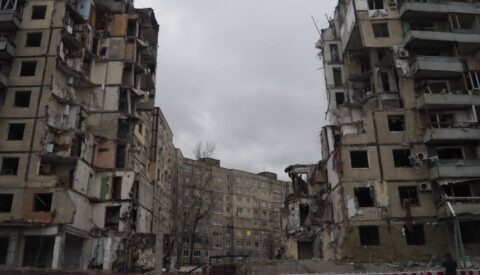Why Bullying In Spain Is So Rampant
Spain's education ministry found that more than 9% of secondary school students have felt harassed or cyberbullied by their classmates at some point.
Article

Article
«He slammed his hand on my seat and a bottle of water flew up. Then he told me: ‘Now, cry.’ He chose those words purposefully. He said them because he thinks I’m less of a man than him. These words remind me of what bullies say to the ‘gay boy of the class’ at school». This is how councilor Eduardo Fernández Rubiño (from the Más Madrid party) recounted the confrontation he recently had with Vox deputy Javier Ortega Smith during a plenary session of the Madrid City Council. Unfortunately, it is not the first time such an incident has occurred between Spanish representatives this year.
Furthermore, if this behavior is done by adults, watched by dozens of people and under the lens of the many cameras recording the sessions, what would they do if they were children to show off their «toughness»?
School coexistence
In 2023, the Ministry of Education and Vocational Training presented the largest study of school coexistence in Spain. It gathers the perspectives of students, teachers and families around three issues: the quality of coexistence, the obstacles to coexistence and the conditions to build healthy coexistence.
Despite the good general climate reflected in the data, 9.53% of students still reported having felt harassed, and 9.2% have suffered cyberbullying. On the other hand, 4.58% admitted to having harassed a classmate, and 4.62% to having cyberbullied someone. Among families, 7.7% said they believed their child had been bullied. When they witnessed a case of bullying, 30.9% of the students indicated having reported it to a teacher, 20.17% to a family member and 14.8% to a classmate. A total of 9.83% reported having confronted the harasser, and 7.17% did not know what to do.
60% of students said their school did nothing to prevent bullying
Another study by the ANAR Foundation (Aid to Children and Adolescents at Risk) points out that the most frequent types of harassment are insults, nicknames and mockery, and that most attacks occur in groups (72%). The same report found that 45.4% of kids felt that their teacher «does nothing» and for more than 60%, it is their school that «does nothing». This perception, however, comes as a contrast with the teachers’ data: more than half of the teachers surveyed said they were aware of cases of bullying, and they assured that almost all cases were resolved (90%).
Alarming statistics
Still in 2023, the Complutense University of Madrid and the ColaCao Foundation together released the Study on bullying and cyberbullying in Spain in childhood and adolescence. One of the main conclusions was that in an average class of 28 students, almost two pupils admitted to being bullied. That means 6.2% of students between 4th grade and 12th grade report having suffered bullying in the past two months.
On the other hand, the research also reveals that 2.1% of surveyed pupils recognize themselves as bullies, which means that there is one bully for every two classes. Although these percentages do not show overwhelming majorities, they do indicate that there are in Spain almost 220.000 students who are victims of bullying and more than 74.000 bullies in schools. There are also 16.3% of students who identify themselves as witnesses, that is, 5 boys or girls per classroom.
An aggressive family can make a child more likely to channel his frustrations on physically weaker peers
Now, another supposed study has been circulating in a number of (surprisingly popular) online news outlets, which says that, in Spain, 7 out of 10 minors declared they suffer some type of harassment and cyberbullying every day. That would mean that, in a class of 25 students, 18 would be victims of daily bullying.
This data is staggeringly different from any other study carried out on the matter. Perhaps the author of the «study», the NGO Bullying Without Borders, missed a 0 and it is actually 7 pupils out of 100 (we say «perhaps» because this study does not seem to be published anywhere). Be that as it may, these figures are dubious, despite the fact that they have made so many headlines.
In any case, the question is: why does harassment happen in class? Peer pressure, the desire to maintain a certain status, and other social dynamics often contribute to bullying behaviors. Individual traits, such as low self-esteem, lack of empathy or predisposition to prejudice, can also have a direct influence.
Between the individual and the collective is the family environment, which is key in the development of children and adolescents. An aggressive family or one with attachment issues can make a child more likely to channel his frustrations on physically weaker peers. Families, but also educational centers and administrations, must then join forces to eradicate bullying in Spain — and not only in schools, as sometimes political institutions also seem to need it.
This content is part of a collaboration agreement of ‘WorldCrunch’, with the magazine ‘Ethic’. Read the original at this link.






